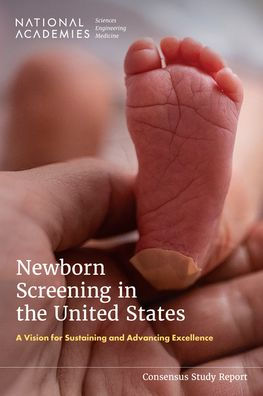In response to a congressional request, the Office on Women's Health of the U.S. Department of Health and Human Services asked the National Academies to convene an ad hoc committee of subject matter experts to examine the current landscape of newborn screening in the United States, recommend options to strengthen this public health service, and establish a vision for the future. Supplementary funding was provided by the Chan Zuckerberg Initiative to enable additional public engagement. The resulting report provides actionable recommendations for navigating the path ahead while preserving and enhancing what is already considered a valuable and effective public health achievement.
In response to a congressional request, the Office on Women's Health of the U.S. Department of Health and Human Services asked the National Academies to convene an ad hoc committee of subject matter experts to examine the current landscape of newborn screening in the United States, recommend options to strengthen this public health service, and establish a vision for the future. Supplementary funding was provided by the Chan Zuckerberg Initiative to enable additional public engagement. The resulting report provides actionable recommendations for navigating the path ahead while preserving and enhancing what is already considered a valuable and effective public health achievement.

Newborn Screening in the United States: A Vision for Sustaining and Advancing Excellence
278
Newborn Screening in the United States: A Vision for Sustaining and Advancing Excellence
278Paperback

Product Details
| ISBN-13: | 9780309992169 |
|---|---|
| Publisher: | National Academies Press |
| Publication date: | 01/01/2026 |
| Pages: | 278 |
| Product dimensions: | 6.00(w) x 9.00(h) x (d) |
